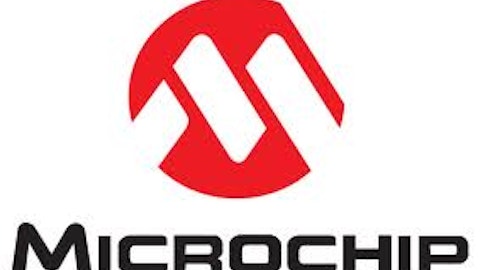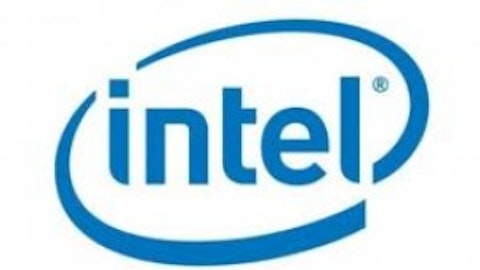Texas Instruments Inc (NASDAQ:TXN) is quite the global economic bellwether, with products that are used in virtually all electronics equipment, from cellphones to calculators. However, is Texas Instruments’ guide down of revenues and earnings a sign that to sell the semiconductor space?
Fund interest for Texas Instruments remained relatively flat for the company during 2Q, with the exception of Jim Simons, who took a new position of 1.6 million shares. Otherwise, top fund owners First Eagle Investment Management and Bill Miller kept their share counts relatively stable.
Texas Instruments itself was down over 3% this week despite beating earnings 13%. The company lowered guidance, now expecting revenues to come in between $2.83-$3.07 billion, well below prior analyst estimates of $3.24 billion. However, Texas Instruments is looking to wind down its baseband operations in lieu of its higher margin semiconductor business. Thus, the company should benefit in the interim from increasing communication infrastructure and smartphone demand. Texas Instruments’ plans for higher margins should be a fundamental driver of the company’s expected 5-year EPS CAGR of 10%, but is there a bull case for other major semiconductor manufacturers?
Texas Instruments is a market leader in semiconductor manufacturing, but it does compete with various smaller companies, including Microchip Technology Inc. (NASDAQ:MCHP) and Cypress Semiconductor Corporation (NASDAQ:CY). Microchip’s pre-announcement of revenues that came in below guidance represents the same macro weakness as seen across other semiconductor companies. Last week the company announced revenues for 3Q that came in around $407 million, versus guidance of $412 million to $430 million.
Cypress posted 3Q earnings last week that saw a 23% revenue drop, again on macro weakness. The company’s book-to-bill was down in all divisions and revenue is expected to be down in 4Q. However, one positive is the expected close of the Ramtron acquisition, which should allow the company to better lay out product strategy and expected cost synergies.
Qualcomm, Inc. (NASDAQ:QCOM) has a focus on products used in wireless technology, and on the back of strong expected smartphone market growth, the company expects to see 2013 revenue growth of 18%. The company should also see solid performance from Apple’s iPhone 5 due to overwhelming demand for the device. The iPhone 5 will be offered in twice as many countries as its predecessor, the iPhone 4S. As well, Qualcomm should see growth from a renewed focus on providing chipsets to China, as the country continues to see increased adoption in smartphones and 3G networks.
Earlier this week, Intel Corporation (NASDAQ:INTC), reported a decline in both earnings and revenue. Intel is the largest chipmaker by volume, with mass exposure to the PC market. The company has come under pressure due to a declining demand for PCs, as smartphones and tablets infringe on the market. Roth Capital recently cut its price target based on Intel’s lower expected 4Q margins due to economic weakness and continued poor PC demand.
All the semiconductor companies listed were down at least 3% on Texas Instruments’ negative outlook and might well be buying opportunities. We find Microchip to be a very interesting stock—being a dividend play in the semiconductor space. Microchip currently pays the highest dividend of our five stocks at 4.5%. Cypress is right there with Microchip however, with a dividend yield of 4.4%.
Yet, Cypress trades well out of line on a P/E basis at 50x, with Microchip, Texas and Qualcomm all trading around 20x. On the lower end, Intel is trading at 10x and the lowest PEG ratio of 0.9. Our concern for Microchip is the amount of earnings it pays out as dividends. The payout ratio on Microchip’s dividend is around 84%, while Intel and Cypress only pay out around 30%.
We continue to believe that the battered semiconductor industry could see serious price movement in the near term. Yet, we would wait to pull the trigger on investing in either Microchip—given a high payout—and Cypress—given valuation. We do like the other big three names as a play on the potential for a renewed interest in global technology spending. Consumer electronic sales should perform well during the upcoming holiday season, and a new product cycle should boost demand for the semiconductor company’s products with the introduction of Ultrabooks and Windows 8, as well as new phones from manufacturers trying to catch the likes of Apple.





